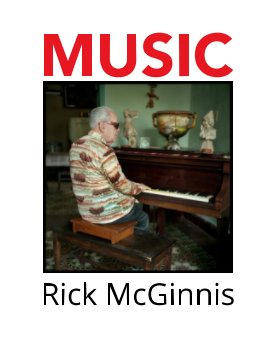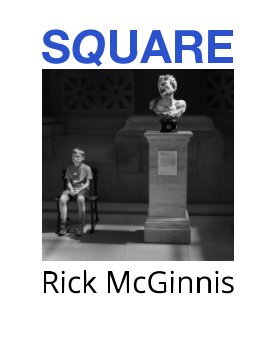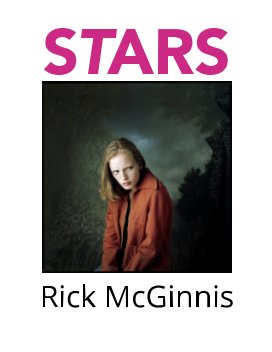 |
| Chris Hadfield, Pearson International Airport, Toronto, August 2009 |
THE YEAR I WAS LAID OFF WAS A BAD ONE FOR NEWSPAPERS. The
Rocky Mountain News, which had published since 1859, closed for good, while the
Seattle Post-Intelligencer. in business since 1863, ceased print publication and went online only. They were just the big names. According to
this story, 105 newspapers closed that year in the U.S. and 10,000 jobs in the industry were lost.
It was a bad time to be looking for a newsroom gig and while freelance opportunities were still available, word rates and assignment fees had either stagnated or declined severely. After the shock of the lay-off subsided, I realized I had to do something - anything - to keep myself writing and shooting, so I contacted the editors of
blogTO, a city news and entertainment website that had been started five years earlier.
It was a practitioner of what was being called "
hyperlocal journalism," which I'd been vocal about praising in my column at the free daily. Initially Tim and Derek, the editors, were skeptical about why I was approaching them for work - it was usually the sort of venue recent j-school grads and youthful urbanist types would work for to build a resume of work. I was - and would remain - the oldest person on their staff the whole time I worked there.
 |
| Building 9, Kodak lands, Toronto, June 2009 |
It took me a while to get up to speed with my posts. It had been years since I had gone out several nights a week or knew what the best new places to eat or shop were. Working for the free daily and raising two small children, my world had shrunk to a few well-worn routes and a few square blocks of the city I once knew so well, and I had to make an effort to reacquaint myself with my own hometown.
My first really successful post was about Building 9, the last remaining part of the Kodak Canada plant where my family had worked since the '20s. The then-owners had left it unguarded and it was inevitably broken into, wide open for vandals, renegade club and event promoters and urbex types. I made my way in with my camera and recorded the damage, then
wrote a post about my own history with Kodak and the neighbourhood. It was probably one of the most popular things I wrote for many years.
 |
| Beach Motel, Toronto, April 2011 |
 |
| Beach Motel, Toronto, Nov. 2012 |
Another ongoing story I attached myself to was the final days of a strip of venerable but run-down motels on Lake Shore Boulevard that was being redeveloped into a thick cluster of condominium towers. I lurked around the area for about a year or two, interviewing the last people trying to make a living there before the inevitable. I was there on the morning the last motel was demolished,
my post just one of a bunch of elegaic stories about the city's relentless transformation.
 |
| Canary Restaurant, Toronto, 2010. |
 |
| Evergreen Brickworks, Toronto, 2009. |
There were a lot of stories like this, like the closing and gutting of the
Canary Restaurant, a worn-out greasy spoon in an old industrial area in the east end that was being turned into an athlete's village for the Pan-Am Games. I also got a look at the
Don Valley Brickworks when it was being turned from an abandoned industrial relic into a eco/foodie destination.
 |
| Rotman's Hats final sale, Toronto, 2009. |
 |
| China House neon re-lighting ceremony, Toronto, 2010. |
 |
| China House contents auction, Toronto, 2011. |
 |
| Valhalla Inn contents auction, Toronto, 2009. |
 |
| Sutton Place Hotel contents auction, Toronto, 2014. |
And there were more stories about the passing of an older Toronto, like the final sale week at
Rotman's Hats, one of the last remnants of Spadina Avenue's Jewish merchant history. I wrote several stories about
China House, an old-school Chinese food restaurant that seemed to get a
new lease of life for about a year before it was inevitably
closed and demolished for more condos.
I also covered the contents sales of two closed Toronto hotels. The
Valhalla Inn was one of the first really glamorous airport hotels, opened in 1963 and designed in a style that took Scandinavian contemporary to its roots with a Viking theme. The
Sutton Place was another modernist high point, and a hotel I knew intimately from shooting musicians and movie stars there for nearly twenty years. I didn't have much history with the Valhalla Inn, but watching the Sutton Place disappear actually gave me a pang of loss I didn't expect.
 |
| Imperial Oil Building, Toronto, 2011. |
I also had an opportunity to tour the old
Imperial Oil headquarters in midtown - an imposing tower built on the highest point in the city from plans reputedly rejected for Toronto's city hall. I had always wanted to get inside, and
blogTO's credentials were enough to allow me a guided tour as workmen stripped out the offices and boardrooms to make way for - yes, big surprise - more condos. I was particularly taken with the gold tiles on the walls of the sky lobby outside one of the big main boardrooms - an unusually luxurious expression of midcentury modernism, I thought.
Looking back, I shot a lot of ruins and wreckage and demolition in my years at
blogTO. It's not a surprise - my city was undergoing the latest in a series of radical transformations, with construction cranes all over the horizon and whole districts either being changed utterly or created out of parking lots and abandoned buildings. It's a boom that still hasn't wound up, and I'd be lying if I said I had unmixed feelings about watching - and documenting - the erasure of the city where I grew up.
 |
| Portlands, Toronto, 2010. |
 |
| Corso Italia Festival, Toronto, 2013. |
Working for
blogTO forced me to concentrate on street photography, a style that I had never explored much in all my years of shooting portraits and news for
NOW, eye, the
Globe & Mail, the
National Post or the free daily. Their posts featured photos as much, if not more, than words, and I had to learn to produce shots that could stand alone on a web page.
 |
| Ripley's Aquarium opening, Toronto, 2013. |
BlogTO's credentials also got me into events like the media day before the
opening of Ripley's Aquarium, a major tourist attraction right next to the CN Tower. I relished these opportunities, not only for the photos they allowed me to take, but for the sense that I was still part of the media, showing up and providing my coverage. Being laid off had felt like a sort of banishment from the profession I'd laboured in for so many years, so I was happy for any chance to hang a press pass around my neck and do my job.
 |
| Canadian National Exhibition, Toronto, 2009. |
 |
| Canadian National Exhibition, Toronto, 2014. |
In many ways, working for
blogTO wasn't terribly different from working for a daily newspaper. We'd still cover news events like the opening of the Canadian National Exhibition at the end of every summer, and I was given that assignment for several years running. I had never done those ritual news calls before, so ironically it was working for the all-digital "new media" - which was supposedly speeding the decline of print dailies - that saw me covering stories like the annual Air Show, or interviewing and photographing the mayor at press conferences.
 |
| Helio Castroneves, Honda Indy, Toronto, 2012. |
 |
| Honda Indy, Toronto, 2013. |
 |
| Pit crew, Honda Indy, Toronto, 2014. |
 |
| Honda Indy, Toronto, 2015. |
One of those annual stories was the Honda Indy - the weekend long summer car race that takes over the CNE grounds. I'm a motorsport fan, but I had never shot a car race until
blogTO gave me the credentials and I
began spending a
whole weekend at the track
with my cameras. It was an
opportunity I cherished, and a chance to ascend yet another steep learning curve as a photographer, learning to execute all the standard shots required for car race coverage, and perhaps even try something new.
 |
| World Cup celebrations, Etobicoke, 2014. |
 |
| Rob Ford, election nght, 2014. |
The funny thing was that
blogTO made me more of a straight news photographer than I'd ever been before, assigning me to cover stories like fans reacting to
Germany's World Cup win, or the end of the
Rob Ford era in city politics. I even got the assignment of writing
Ford's obituary for the site - a post that I'm still proud of today as a relatively objective assessment of his legacy in a time and place where nobody (especially in my business) was anything other than rabidly partisan.
Which reminds me of the worst thing about
blogTO, at least in the early days: The comments thread on posts was famously vicious, a hangout for trolls and keyboard warriors who obviously thought they could do the job better than you could. I made the mistake of engaging in my first year or two posting there, and it was never a wise or prudent move. On the worst days, it was as ugly as the comments section on a YouTube clip, and eventually they found a way to make commenting less visible or encouraged. So much for the dream of "online communities" and reader engagement.
 |
| Hotel bartenders, Toronto, 2010. |
 |
| Crazy Steve, Kensington, Toronto, 2011. |
The one thing I didn't do much of at
blogTO was portraiture - my specialty as a professional photographer. I had been forced to strip down and reinvent my style at the free daily, and had just arrived at something intriguing when the lay-off made me drop that thread and, one more time, start all over again.
I ended up doing something more like environmental portraiture, shooting people in a setting or context, like astronaut Chris Hadfield by the tail of the vintage F-86 Sabre he flew in the
2009 Air Show, or
"Crazy Steve" Goof of local punk rock legends Bunchofuckingoofs by the entrance of what was once Fort Goof, the band's stronghold in Kensington Market. Or the series of portraits I did for a story on the 12 best hotel bars in Toronto, where I photographed each bartender in the same position behind the bar - a time-consuming assignment that I conceived mostly as a challenge for myself.
The pay at
blogTO was ridiculously low, and I'm not sure that the time or effort I put into most of my stories ever made much economic sense. I'm not complaining - I definitely didn't do it for the money as much as a chance to keep working and publishing at a time when nobody seemed interested in hiring me, either in a newsroom or as a steady freelancer.
BlogTO let me test myself and my capabilities as a photographer and journalist, and if what I earned per post was essentially a nominal fee or honorarium - there's no way that the $40 I got for covering a whole weekend at the Honda Indy covered even a fraction of my time - at least I was working, at a time when many of my peers were (quite sensibly) leaving the business.
There was no definitive end to my time at
blogTO. I had always felt like mutton dressed as lamb working there, and knew that the particular skill set and enthusiasms of an old journalist would sooner or later be superfluous to their needs. Eventually the assignments got as occasional as my story pitches and a redesign/revamp of the site moved away from long form stories to more lists and short pieces - exactly the sort of work that interested me the least. I knew it was probably time to go the year they said they weren't interested in covering either the auto show or the Honda Indy any more.
I'm not bitter -
blogTO was a flag of convenience for me at a time when I just needed to keep working and shooting until whatever next move I needed to make made itself apparent. I'm grateful for the chance to do as much as I did under the banner Tim and Derek provided for me, and for hitching a ride into the world of online media that seems more like the future now than it did when I was jettisoned from the world of newsprint.


























































